KYIV, Ukraine — Forced back, Ukraine is now digging in to stop a collapse across the war’s front lines as Russian attacks and American delays leave Kyiv and its allies to confront the possibility of a painful defeat.
A $61 billion aid package has been stuck in Congress for months, leaving Ukraine exposed on the front lines — running out of ammunition and men — while its energy system now faces an onslaught that is exposing its depleted air defenses.
The shortages forced Kyiv’s military to withdraw from a key eastern city in February, and with no progress in Washington, Ukrainian soldiers are now desperately trying to hold on to their positions along some 600 miles of the front line.
“Nothing has changed: We did not have any shells then, we don’t have any shells now,” said artillery sergeant Andriy, who was part of Kyiv’s retreat from Avdiivka in February after months of intense fighting. “The Russians continue to push in packs, without stopping,” Andriy, who did not want his last name revealed as he was not authorized to speak publicly, told NBC News last week.
Ukrainian leaders, backed up by Western officials, are pushing Republicans to break the logjam before it is too late, fearing the Kremlin could seek to take advantage by launching a new offensive over the summer or sooner.
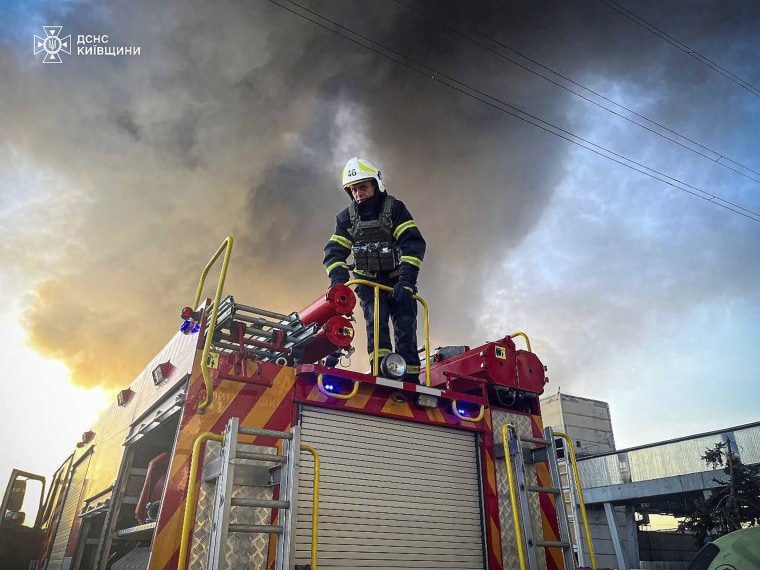
“They understand that we are in a very weak position right now,” said Oleksandra Ustinova, a member of Ukraine’s parliament who chairs the country’s wartime oversight commission on monitoring aid. “Americans understand that as well. They understand that we literally have nothing to shoot with,” she said in a phone interview this week.On Wednesday, that message was echoed by the top U.S. general in Europe.
Russia is currently firing five artillery shells for every one fired by Ukrainian forces, and that disparity could increase in the coming weeks to 10 to 1, said Gen. Christopher Cavoli, commander of the European Command.
He told Congress that Ukraine will run out of artillery shells and air defense interceptors “in fairly short order” without new U.S. support, leaving it vulnerable to a partial or total defeat.
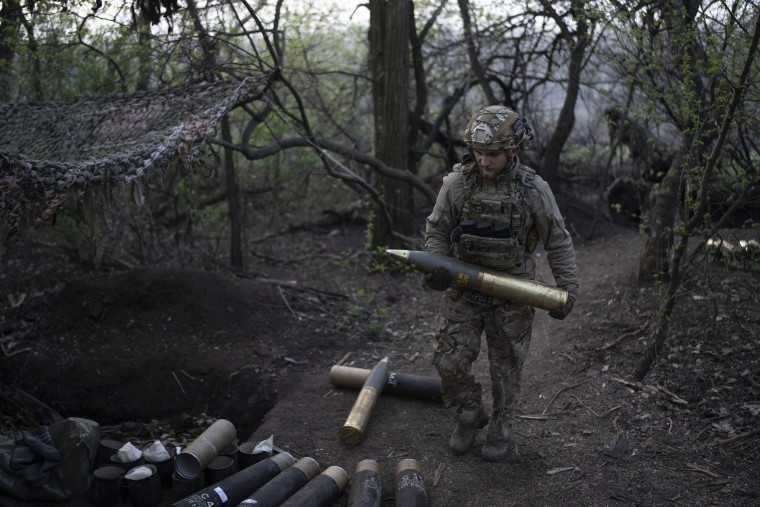
A crisis on the battlefield has increasingly become one in the air too.
Russia has turned its attention back to Ukraine’s energy grid, striking key facilities in missile and drone attacks that have exploited a shortage of air defense systems across the country.
But a particular focus has been Kharkiv, forcing rolling blackouts and raising the prospect that Ukraine’s second-largest city could soon become the Kremlin’s primary target.
The city, which had a prewar population of 1.5 million people, lies just 26 miles from the Russian border, and President Vladimir Putin last month hinted at his desire to carve out a “sanitary zone” around the broader Kharkiv region to stop Ukrainian attacks from reaching Russia’s own border regions.
The Ukrainians are looking for additional forms of air defense “of all kinds as soon as humanly possible,” a senior U.S. State Department official said. Kyiv has made it “very clear that the Russians are clearly taking a much more aggressive posture towards Kharkiv right now,” the official said.
Norwegian Chief of Defense Gen. Eirik Kristoffersen said in an interview this week that air defense was key not just to protecting Kharkiv from missile attacks, but to preventing a ground assault on the crucial city. “I don’t see right now that with the current situation that the Russians can do it, but I’m concerned if Ukraine runs out of air defense systems that would change the dynamics,” he said.
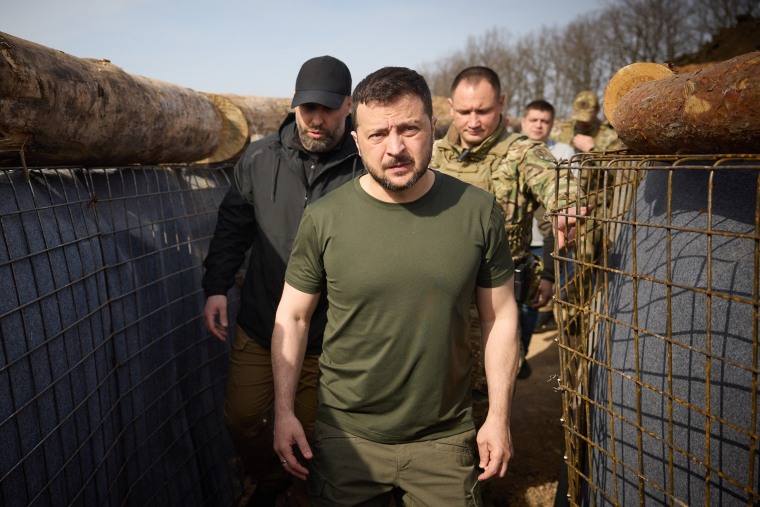
The possibility of a renewed Russian offensive on Kharkiv is top of mind for one Ukrainian sergeant whose battalion is stationed in the area.“We won’t let them take it,” said the bullish sergeant, who goes by the call sign “Marine” and did not want his name published as he was not authorized to speak publicly. But the challenge was evident: Their ammunition levels are so low, the sergeant said, that for every shot his troops fire, the Russians respond with 10. Ukrainian commanders don’t let them fire until Russian forces are already storming their positions, which is often too late, Marine said.
But while fears of an attack on Kharkiv in the north are mounting, the Russians have been actively pushing near the town of Chasiv Yar, a front-line city in the eastern Donetsk region just 30 miles north of Avdiivka.
Last week, Russian state media reported that Russian forces entered the suburbs of Chasiv Yar, and on Monday Russia’s Defense Ministry said its paratroopers stormed a Ukrainian stronghold on the outskirts of the city. Ukraine admitted last weekend that things were “difficult” there.
“Russia is already trying to advance now,” said Mykola Bielieskov, a research fellow at Ukraine’s National Institute for Strategic Studies, a government research group. “They are trying to take advantage of the fact that Ukraine is suffering severe shortages of artillery and air defense.”
To hold them off, Ukraine is digging deep in more ways than one.
Three defense lines are being built, even where there are no hostilities, Zelenskyy said last weekend while visiting new fortifications in the northern Chernihiv region, bordering Belarus. In some areas of the front, the fortifications are nearly finished, he said, and include “dragon teeth” installments and ditches to stop tanks. Zelenskyy said he is making no secret of this because he wants Moscow to know “there will be resistance.”
It’s a far cry from a year ago, when it was Russia’s military building trenches to try and fend off a Ukrainian counteroffensive that ultimately petered out.
But digging in is probably the best that the Ukrainians can do right now, said Bryden Spurling, a defense and security expert at RAND Europe. “What I worry about is that if there is a breach, it could lead to a fairly large collapse if the Russians are able to exploit that,” Spurling said. “What you would want the Ukrainians to be able to do is to throw in reserves to plug that gap. But it’s hard to know how much Ukraine actually has that capacity.”
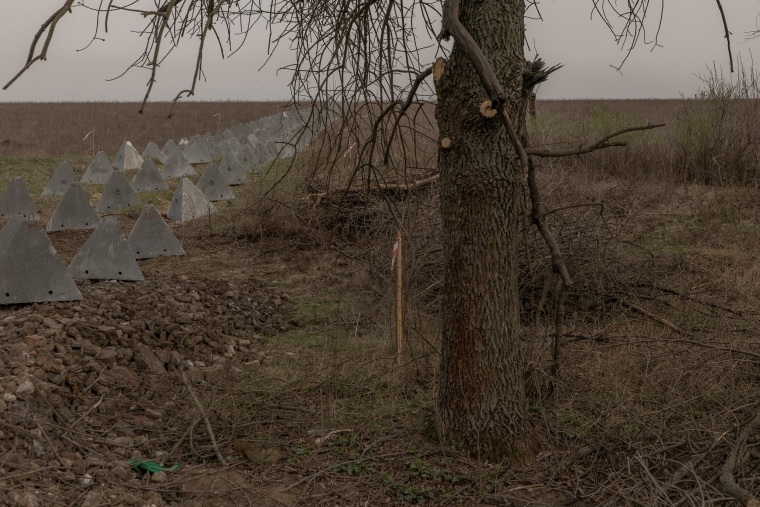
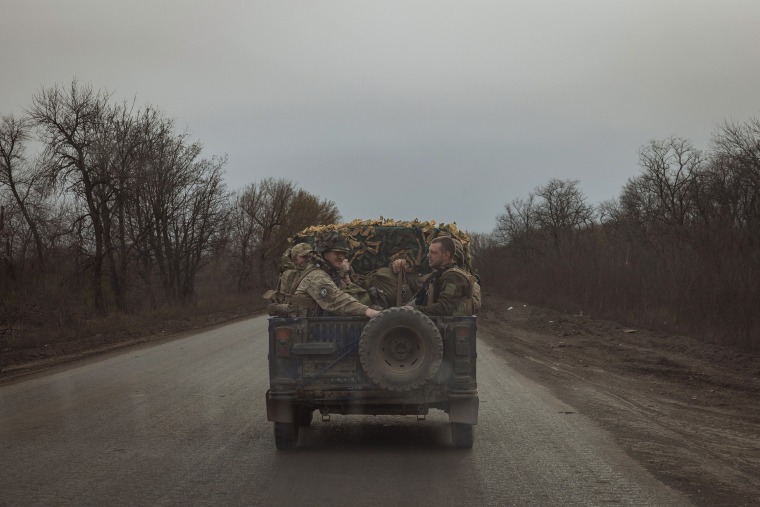
Ukraine has been scrambling to recruit more troops to boost its depleted ranks, exhausted by two years of war. The country’s parliament passed a new law on mobilization Thursday after months of revisions from a government wary of public pushback. Still, Ukraine will have to find new conscripts from somewhere if it is to keep up its defensive fight on the battlefield, and Zelenskyy’s government already moved to lower the draft-eligible age for men earlier this month.
‘Ukraine will lose the war’
Ukraine’s urgency has not been matched by its chief ally’s, however.
New military aid has been stalled in Congress since December amid resistance from hard-line conservatives.
The Biden administration has tried to keep at least some aid going, announcing $300 million in additional weapons last month and an emergency $138 million for maintenance of a key missile defense system earlier this week.
“If Congress does not help Ukraine, then Ukraine will lose the war,” Zelenskyy warned Sunday to a team of celebrity ambassadors, including Americans, who are championing Ukraine’s cause abroad.
While his increasingly drastic tone may be seen by some as an attempt to pressure Washington into action, Ustinova, the Ukrainian parliamentarian, said Zelenskyy’s warnings are not an exaggeration.
Kyiv’s European partners have been trying to ramp up their contributions and bridge the gap left by the lack of U.S. aid. But all the capabilities that exist in Europe right now can’t offer even half of what the U.S. has, Ustinova said.
France has taken a more strident approach to the conflict, and Britain’s top diplomat was in the U.S. this week to push for more support.
Looming over all of this is former President Donald Trump.
U.K. Foreign Secretary David Cameron went to see the Republican candidate in Florida, and Zelenskyy has increasingly been confronting the prospect of a second Trump presidency in public.
Zelenskyy said last week he was still hopeful for a “positive vote” in Congress, and even suggested that Kyiv would be willing to get the aid in the form of a loan rather than a handout, an idea floated by House Republicans that seemingly originated with Trump.
Just six months out from the U.S. election, the possibility that Trump could cut off Ukraine completely or try to force it to cede territory as part of a truce deal with Russia may be focusing minds in Kyiv.
Trump’s promise to end the war in just 24 hours has fueled anxiety in Ukraine, although Zelenskyy said Wednesday that he would listen to Trump’s ideas on how to end the war “with pleasure” if given the opportunity.
“The absence of American aid is creating problems,” said Bielieskov, the Ukrainian military analyst. “But on the other hand, if a Trump administration awaits us,” he said, “then maybe it’s better to get used little by little to live without the U.S. in 2024 than to have an emergency in 2025.”
Daryna Mayer reported from Kyiv, and Yuliya Talmazan from London.
